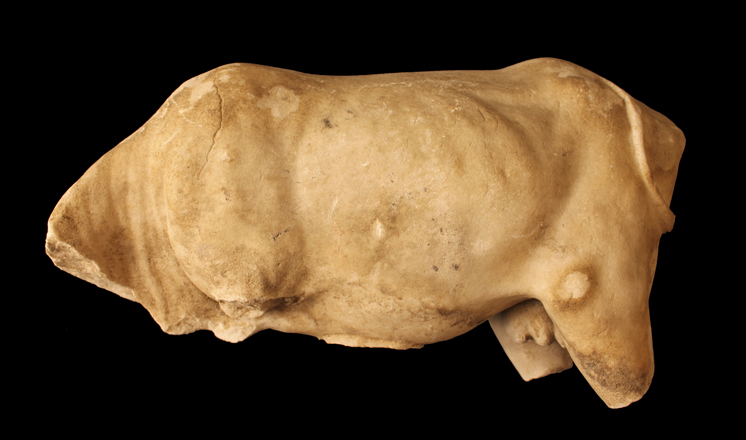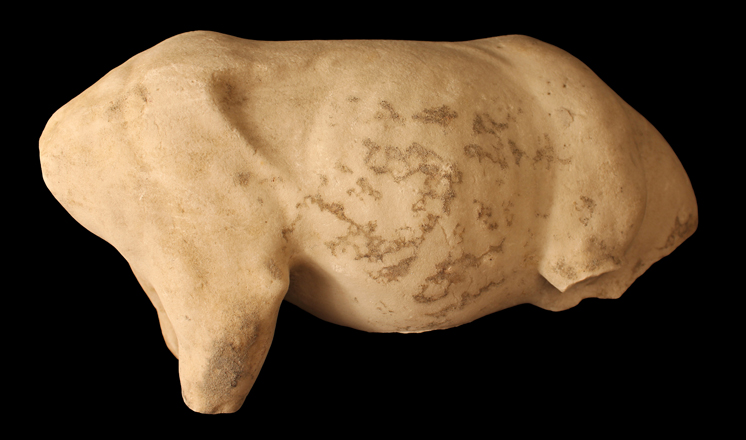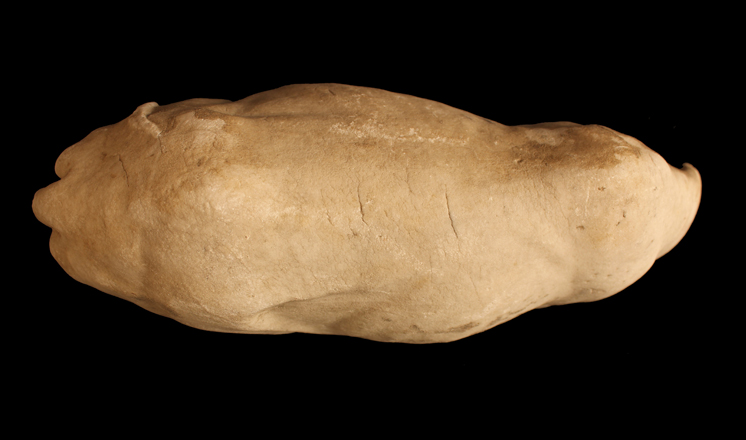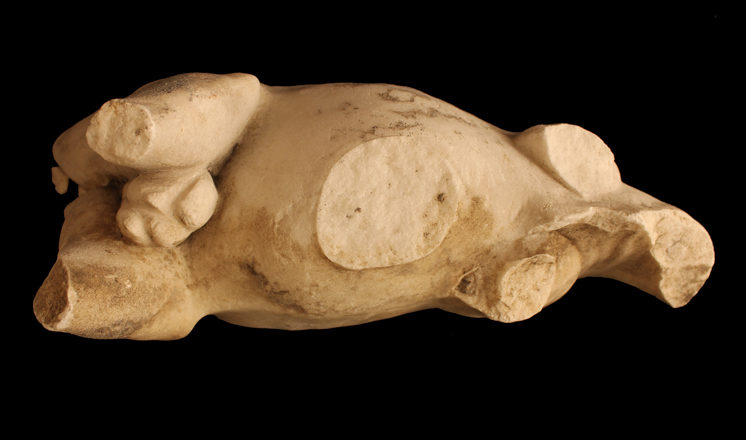A new Roman marble bull from Lincoln
RSS FeedWe are delighted to announce a new addition to the museum's archaeological collections in the form of a fragment of a rare Roman marble statuette of a bull, dating to the 1st or early 2nd Century AD.
Although marble is well known as wall decoration in Roman Britain in the form of thin veneers (for example those from the Lincoln Roman baths on display at the museum), sculptural marble is a much rarer find. Less than 40 examples of sculptural marble are known from Roman Britain, and even this includes some examples that might actually be Neo-Classical rather than ancient. Where marble sculpture is known to be Roman, it is invariably anthropomorphic. Emperors, prominent citizens and deities are all known from marble busts, but in contrast zoomorphic sculpture is almost virtually unknown. Of the few animals depicted in marble, some can be identified as being the animal attendants of specific deities and therefore do not portray animals as animals, but of symbols of their associated deities. This new bull torso is believed to be part of a domestic or garden statue rather than a religious image, and is therefore an extremely significant find.




The bull was found in a garden to the north of Lincoln, on the edge of the known extent of the cemeteries lining Ermine Street as it stretched away towards the River Humber. Excavations at the findspot have sadly not revealed any additional Roman context, the area being much disturbed by later quarrying. Although the bull is definitely Roman, we therefore have to entertain the possibility that it arrived at Lincoln later than the Roman period. One suggestion is that it represents a 'Grand Tour' piece, an item of classical art brought back from Italy by a traveller in the 18th or 19th Centuries, though the fact that no large houses that might have contained such a collection exist in the area make this less likely.
The bull is sadly missing its head, its front legs and its lower rear legs, but otherwise is in good condition, and the fine detailing of the musculature and skeletal structure can be seen, particularly in the delicate detailing of the ribs. A circular scar underneath the body indicates where a supporting column once existed, stopping the weight of the body from breaking the more delicate legs.
The lowered position of the head has led us, after consultation with leading experts, to believe that the bull was originally in a stance known as 'taurus cornupeta' – the 'butting bull'. This pose has the bull with head lowered, showing its horns, with one leg front planted in front and the other sometimes lowered, sometimes raised as if pawing at the ground. This image is well known in ancient art, and appears on finger rings as well as on coinage. It was a particularly popular image in the reign of the Emperor Augustus (27BC-AD14) and was revived in the reign of Vespasian (AD69-AD79). It was even known in late Iron Age Britain, appearing on the heavily Roman-influenced coinage of southern rulers such as Cunobelin and Verica. The butting bull was clearly a powerful symbol associated with Roman authority.
The bull was acquired by the museum with the generous assistance of the Art Fund.
The finding of the bull has led us to embark on an innovative project in partnership with Optima Graphic Design and the University of Lincoln to use digital and artistic techniques to recreate how the bull may originally have looked. You can read all about that process and see the reconstructed bull in this related blog post.
Comments
There aren’t any comments for this blog yet




